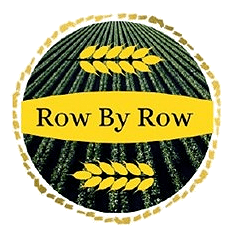Farmers and Growers Request a Callback Learn More

How much more marketable food would your fields yield, if you harvested one more time? How much money are you leaving in the field?
Recent research by North Carolina State Horticulture Ph.D. Lisa Johnson across eight crops shows an average of 22% more first-quality food is left in fields when farmers have finished their commercial harvest. Yikes! Lisa calls that “Post Harvest Yield Potential,” and she has developed a simple method that will allow you to see how your harvest compares.
Here’s a great article written by Lisa Johnson for American Vegetable Grower, that shows how measuring postharvest yield potential improved one farm’s bottom line.
The Society of St. Andrew — the gleaners — have been going into fields after commercial harvest for 40 years, gathering up whatever edible food remains to share with nearby agencies that feed hungry people. In order for us to feed hungry people, though, you need to keep on farming.
Watch this two-minute explanation of the Row by Row program by our Tennessee Regional Director, Jeannie Hunter. Then CLICK HERE to contact a SoSA representative in your area.
This year, the Society of St. Andrew (SoSA) is launching the Row by Row project, working with Dr. Lisa Johnson, to help you calculate the value of what’s left in your fields — the Post Harvest Yield Potential. We’ll share the data we gather with you.* Then you can do the math, and compare potential profit against the cost of another harvest pass through the field.
With research results in hand, in future years you’ll be able to harvest the greatest amount of food for commercial sale AND to know just when it’s time to call in SoSA’s gleaners to pick, dig, or gather whatever is left, for sharing with hungry neighbors.
*Collected data will be aggregated as part of a larger research study, and no personally identifiable or disaggregated information will ever be shared except with you.
Sign Up and Participate as a Grower
Further reducing waste ensures we are doing everything we can to see that all agricultural inputs — soil, seed, acreage, water, nutrients, and labor — meet their best use: feeding people and keeping families on their farms.
Lynette Johnson, Executive Director, The Society of St. Andrew

